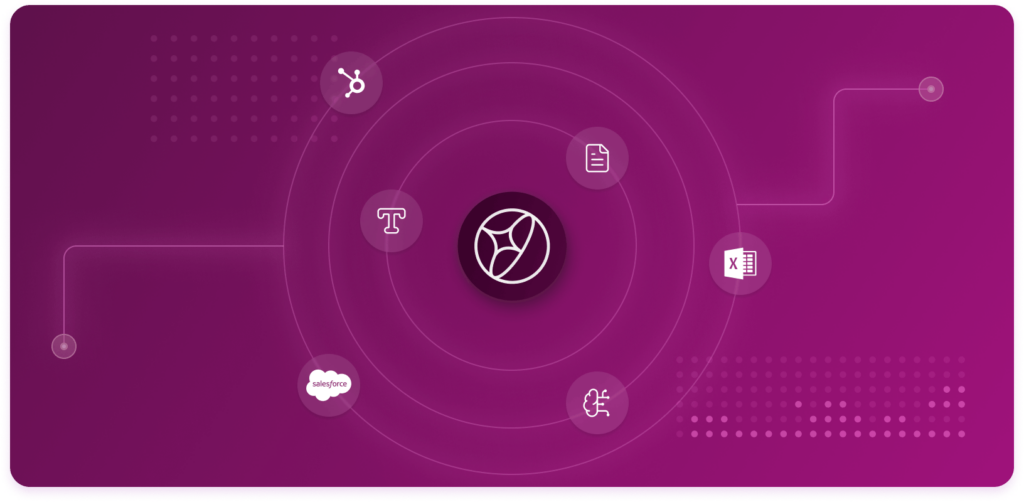Escrito por: Maisa Publicado: 12/06/2025

Automation has traditionally focused on simple, repetitive tasks that follow predictable rules. While this approach has streamlined many routine jobs, critical business processes still rely heavily on manual intervention. These workflows typically involve judgment, changing inputs, or coordination across multiple tools and teams, making traditional automation ineffective.
Agentic Process Automation (APA) closes this gap, using AI agents to handle complex processes needing contextual reasoning and multi-step decisions. Instead of rigid scripts, APA adapts to changing information, learns from human feedback, and coordinates actions across different tools, making automation smarter and more flexible than ever.
Agentic Process Automation is built for the kinds of workflows that most automation tools avoid, the ones that aren’t fully predictable. These are processes where rules can’t be hardcoded, because the right action depends on changing data, uncertain conditions, or outcomes that unfold step by step.
APA handles entire workflows that involve:
Instead of automating isolated tasks, APA connects the dots across systems and decisions. It can understand context, make decisions in real time, and adjust its actions based on what it sees. That’s what makes it effective for the kinds of processes that still live in spreadsheets, inboxes, or manual reviews.
Across many teams, there’s a growing need to automate work that doesn’t follow a fixed script, where the right next step depends on the data, the tools involved, or the situation itself.
These examples show how AI agents are already taking on that middle ground, handling real operations in finance, customer service, and supply chains, where rules aren’t always fixed and context matters.
What’s the business problem?
Finance teams spend hours reviewing invoices by hand. Formats vary, data needs to be verified, and mismatches often slow down payments or lead to errors.
How does APA solve it?
APA reads any invoice format, extracts the relevant data, and matches it with POs and receipts from the ERP. If everything lines up, it posts the transaction. If not, it flags the discrepancy, explains it, and routes it for human approval. It also learns from corrections to improve over time.
What systems/tools are involved?
Email, ERP (SAP, Oracle), shared inboxes, and approval workflows.
Why traditional automation falls short
Traditional systems need fixed templates or strict formatting rules. APA handles unstructured documents, adapts to new formats, and reasons across systems without rigid scripts.
What improvements can be expected?
Faster processing, fewer errors, and more invoices going straight through without human review.
What’s the business problem?
Support teams face a growing number of incoming requests. Tickets get routed inconsistently, and agents spend too much time on repetitive questions.
How does APA solve it?
APA reads incoming messages, classifies the issue, drafts a response, and either replies, escalates, or assigns the ticket. It adapts to tone, context, and learns from feedback to improve its accuracy.
What systems/tools are involved?
CRM, ticketing platforms, internal knowledge bases.
Why traditional automation falls short
It can’t handle free-text inputs well, doesn’t learn from outcomes, and lacks flexibility to deal with edge cases or changing language.
What improvements can be expected?
More tickets resolved automatically, faster response times, and fewer escalations to human agents.
What’s the business problem?
Buyers spend too much time chasing suppliers for updates. Confirmations get missed, and delays often go unnoticed until it’s too late to react.
How does APA solve it?
APA tracks open purchase orders, identifies missing confirmations, and emails suppliers to follow up. It reads the replies, extracts delivery dates or reasons for delay, updates the ERP, and flags risks that need human attention.
What systems/tools are involved?
Procurement platforms, email, supplier portals, and dashboards.
Why traditional automation falls short
It can’t interpret free-form replies or adjust to each supplier’s way of communicating. APA understands language, handles exceptions, and keeps improving with each interaction.
What improvements can be expected?
More confirmed orders, fewer last-minute delays, and less time spent on manual follow-ups.
What’s the business problem?
Closing the books takes too long. Teams rely on spreadsheets to match transactions across systems, and even small mismatches cause delays.
How does APA solve it?
APA pulls data from ledgers and bank feeds, matches entries using logic and context, flags variances, and explains them clearly. It can prepare close reports and update reconciliation files automatically.
What systems/tools are involved?
General ledger systems, bank feeds, spreadsheets, and close tools.
Why traditional automation falls short
It struggles with exceptions and fuzzy matches. APA can handle inconsistencies, apply reasoning, and explain its decisions.
What improvements can be expected?
Shorter close cycles, fewer errors, and better visibility into what’s slowing things down.
Agentic Process Automation isn’t about scripting steps. It’s about setting clear goals and letting AI agents figure out how to get there. Instead of automating isolated tasks, APA connects decisions, tools, and actions into one intelligent flow.
The result: faster outcomes, fewer handoffs, and processes that adapt as conditions change.